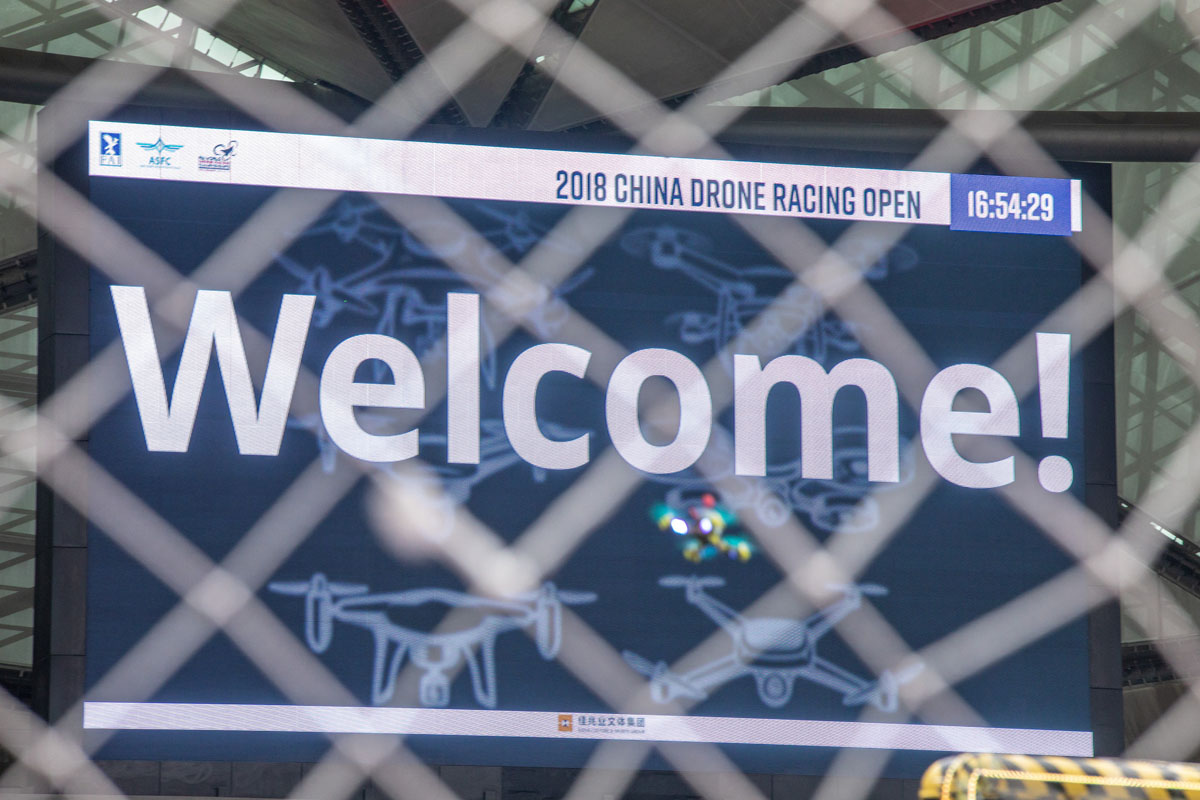Noosphere Technology at the FAI Drone Racing World Championships
When drones race they can hit speeds of 150km/h in seconds. That makes watching a drone race exhilarating as up to six drones at a time race through the course. But it also makes it a potential technological nightmare – how do you score a race where everything is moving so quickly?
FAI Global Technical Partner Noosphere is running the event management system at the upcoming 1st FAI World Drone Racing Championships in Shenzhen, China in November. At a test event in China in May we caught up with Noosphere's Yuri Letser, 42, to ask him about the event management technology underpinning the competition.
Yuri, what's Noosphere's role here?
To provide and run our eNavigator system. It's an event management system developed by us on behalf of the FAI. Its goal is to manage the entire event, starting from registering participants, then managing the website and online results. So we cover everything except the scoring.
Noosphere was co-founded by Max Polyakov and Michael Ryabokon, and the company's mission is that we seek to unite scientists and researchers in order to promote science and technology in the business environment. Our eNavigator system is designed to get the results from any scoring system and publish it online and on the big screens, and to present the results. Personally, my role here is to support this system, to make sure it is all running OK for the pilots, judges and officials.
How do you track the drones? They fly fast...
Yes, they go very fast! Each drone has a video transmitter installed, which sends a video stream to the pilots. Out in the field we have a timing system box, placed exactly inside the gate.
The timing box detects when the drone flies over the box, and measures the strength of the video transmission signal from the drone and how it changes. So the box can track when the drone crosses the line. That is how we get a lap time for each drone.
The timing boxes are specially developed for drone racing and can be bought off the shelf for about $600.
What are the biggest challenges at an event like this?
The eNavigator system is designed to manage general air sports competitions, so the biggest challenge is always that each event has its own rules and details. The trick is to adapt what we have to meet the requirements of the competition field and staff.
For example here in Shenzhen at this drone race, it was like a black box, we didn't know how the scoring worked. So we spent a couple of days adapting the system to what we have.
Have you worked on big drone competitions before?
We've done helicopter races in the Ukraine, but it wasn't as big as this, Here in China we have 71 pilots. In Ukraine we had up to 40.
What are the challenges of a bigger field?
More data. We start with Qualification rounds, then Elimination rounds. So there are lots more flights. The time between flights is three or four minutes, and we have a lot of work to do in that time. We have to capture the results, check everything is OK, print it, and give it to the FAI Judges.
All the results for each race must be printed and signed by the pilots, to confirm that the pilots are happy with the race and results. It's about developing a routine.
What sort of hardware do you bring with you?
Just a lot of laptops. Wherever we go we rely on the local internet connection as our system is online. The eNavigator system can publish everything in near realtime, but this means we have to be online every minute. So that can be kind of difficult!
But for people watching it means the results go online immediately. What you see online is what you see on the big screen in the field of play.
What lessons have you learnt that you will apply at the World Drone Racing Championships in November?
First we need to make sure 100% that our system works well with the hardware on the field. Plus it's about the routine, so in November we will know what to do, how to act, weak points.
Plus for the Worlds we will have a backup solution for the main event – offline servers right here in the field. We'll have a network structure that will work without the internet. So if the WiFi goes down we can still publish to the screen in the stadium, which will then update online when it connects.
Can other air sports use your system as well?
It's transferable, it's online and it's free for FAI members. Anyone can use it. Any sport or commission may use it. It was used at the World Games in Poland last year, for Paramotoring, Canopy Piloting and Glider Aerobatics. This year it's been used for helicopter competitions, and they use it in the Gordon Bennett Cup gas balloon race.
Each discipline requires some configuration. We are going to implement standard templates for the most popular disciplines, so it will become much easier and simpler to set up a competition or event.
Many thanks, and good luck in Shenzhen!
Thank you.
Photo: Yuri Letser (right) and his brother Kyrylo at work in Shenzhen, China managing the eNavigator system from Noosphere. Credit: Marcus King / FAI
For more information visit Noosphere


